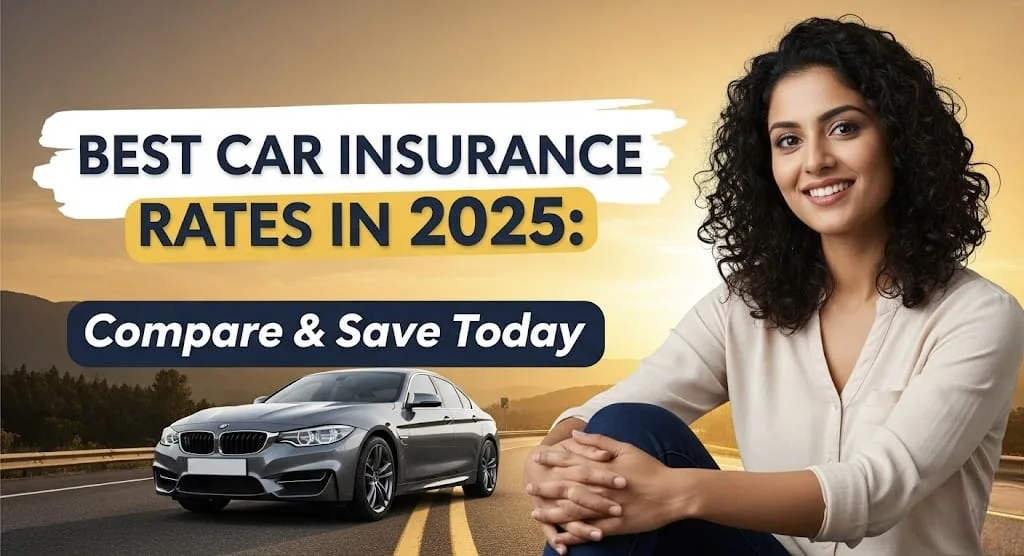The new year is in full swing, and with it comes the perfect opportunity to reassess your expenses, especially something as crucial as car insurance. As a car owner, navigating the complex world of insurance can feel overwhelming, but securing the best car insurance rates in 2025 doesn’t have to be a Herculean task. With a little research and strategic comparison, you can significantly save money on your premiums without compromising on essential coverage. This comprehensive guide will walk you through the key factors influencing rates, provide actionable tips for finding affordable policies, and highlight why comparing is more vital than ever.
Understanding Your Car Insurance in 2025: What’s Driving the Costs? 📈
Car insurance premiums aren’t static; they are a dynamic reflection of various risk factors that insurers evaluate. In 2025, several trends continue to shape the cost of your policy. Understanding these can empower you to make informed decisions and potentially lower your rates.
Key Influencing Factors:
- Vehicle Type and Value: The make, model, and year of your car play a significant role. Luxury cars, high-performance vehicles, and those with expensive parts tend to attract higher premiums due to the increased cost of repairs or replacement in case of an accident or theft.
- Driving History: Your driving record is arguably the most impactful factor. A clean record, free of accidents, traffic violations, and claims, will almost always result in lower premiums. Conversely, a history of claims or serious infringements can significantly increase your rates.
- Location, Location, Location: Where you live and primarily drive your car can heavily influence your premium. Urban areas with higher traffic density, crime rates, and greater risks of accidents typically have higher insurance costs compared to rural areas.
- Age and Experience: Younger drivers, particularly those under 25, generally face higher premiums due to their perceived lack of driving experience. As drivers mature and gain more years behind the wheel with a good record, rates tend to decrease.
- Chosen Coverage and Add-ons: The type of policy you opt for – whether it’s the mandatory third-party liability or a more comprehensive plan – directly affects the premium. Adding extra covers like zero depreciation, engine protection, or roadside assistance enhances your protection but also increases the cost.
- Insured Declared Value (IDV): This is the maximum sum an insurer will pay in case of total loss or theft of your vehicle. A higher IDV means a higher premium, as the insurer’s liability is greater.
The Power of Comparison: Your Gateway to Savings 💡
The single most effective strategy to secure the best car insurance rates in 2025 is to compare quotes from multiple insurance providers. The market is competitive, and different insurers have varying pricing models, discount structures, and risk assessments. Relying on your current insurer for renewal without exploring other options could mean leaving significant savings on the table.
Why Compare?
- Uncover Hidden Gems: You might discover smaller insurers offering highly competitive rates for the same or even better coverage.
- Tailored Policies: Comparison platforms allow you to easily customize policies, adding or removing specific add-ons to perfectly match your needs and budget.
- Transparency in Pricing: By seeing quotes side-by-side, you gain a clear understanding of what you’re paying for and can identify any discrepancies.
- Access to Discounts: Many insurers offer a plethora of discounts – from no-claim bonus (NCB) protection to safe driver incentives – that you might not be aware of unless you actively compare.
Smart Strategies to Lower Your Car Insurance Premiums clever 🔑
Beyond comparison, several proactive steps can help you further reduce your car insurance expenses in 2025.
Actionable Tips:
- Maintain a Pristine Driving Record: This cannot be stressed enough. Avoiding accidents and traffic violations is the most direct path to lower premiums and maximizing your No Claim Bonus.
- Increase Your Deductible: Opting for a higher voluntary deductible means you agree to pay a larger amount out-of-pocket in case of a claim. This reduces the insurer’s risk, leading to lower premiums. However, ensure you can comfortably afford the deductible if a claim arises.
- Utilize Available Discounts: Always inquire about discounts! Common ones include discounts for anti-theft devices, multi-policy bundling (e.g., car and home insurance from the same provider), low mileage, good student discounts (for young drivers), and even memberships in certain automotive associations.
- Review Your Coverage Regularly: As your car ages, its value depreciates. You might not need the same level of comprehensive coverage you did when it was new. Reassess your needs, especially if your car is older, and consider if a third-party only or a basic comprehensive plan is more suitable.
- Install Safety Features: Cars equipped with advanced safety features like ABS, airbags, and anti-theft systems can qualify for discounts due to reduced risk of theft or severe damage.
- Consider Usage-Based Insurance (UBI): If you’re a careful driver with low mileage, UBI policies, which track your driving habits through telematics devices, can offer significant savings based on your actual usage.
- Pay Annually: If financially feasible, paying your premium in one lump sum annually instead of monthly installments can often result in a small discount from the insurer.
Key Features to Look For When Comparing Policies 🌟
| Feature Name | Description | Benefit for You | Why It Matters in 2025 |
| Claim Settlement Ratio (CSR) | The percentage of claims successfully settled by an insurer. | Indicates reliability and efficiency in processing claims. | A high CSR ensures peace of mind during unfortunate events. |
| Cashless Garage Network | The number of authorized garages where you can get cashless repairs. | Convenience and hassle-free repair process after an accident. | Extensive networks mean easier access to quality service nationwide. |
| Add-on Covers Availability | Optional covers like Zero Depreciation, Engine Protection, Roadside Assistance. | Enhanced protection tailored to your specific needs. | Customize your policy for optimal coverage without overpaying. |
| Online Purchase & Renewal Process | Ease of buying and renewing policies digitally. | Saves time and paperwork, often comes with online discounts. | Digital convenience is paramount for busy individuals in today’s world. |
The Road Ahead: Making an Informed Choice 🛣️
The year 2025 presents both challenges and opportunities in the car insurance landscape. While certain factors like rising repair costs might push premiums up, the increased competition among insurers and the widespread availability of online comparison tools mean that smart consumers are well-positioned to find excellent deals. Don’t rush into renewal or settle for the first quote you receive. Take the time to compare car insurance rates, understand the coverage options, and leverage the tips provided to ensure you get the best value for your money. Your wallet will thank you!
Frequently Asked Questions (FAQs) 🤔
Q1: How often should I compare car insurance quotes?
A1: It’s highly recommended to compare car insurance quotes at least once a year, ideally a few weeks before your current policy is due for renewal. This allows you ample time to research, compare offers, and switch if a better deal is available without any lapse in coverage. You should also compare if you experience a major life event, like moving to a new city, buying a new car, or adding a new driver.
Q2: Is third-party insurance enough for my car?
A2: While third-party liability insurance is legally mandatory in India and covers damages or injuries to a third party, it does not cover damages to your own vehicle. For comprehensive protection against various risks like accidents, theft, fire, and natural calamities, a comprehensive car insurance policy is generally recommended, especially for newer or more valuable cars.
Q3: What is a No Claim Bonus (NCB) and how does it help save money?
A3: A No Claim Bonus (NCB) is a discount offered by insurers on your premium for not making any claims during the previous policy year. This discount accumulates over consecutive claim-free years, significantly reducing your premium. Most insurers allow you to transfer your NCB even when switching to a new provider, making it a valuable asset for safe drivers.


